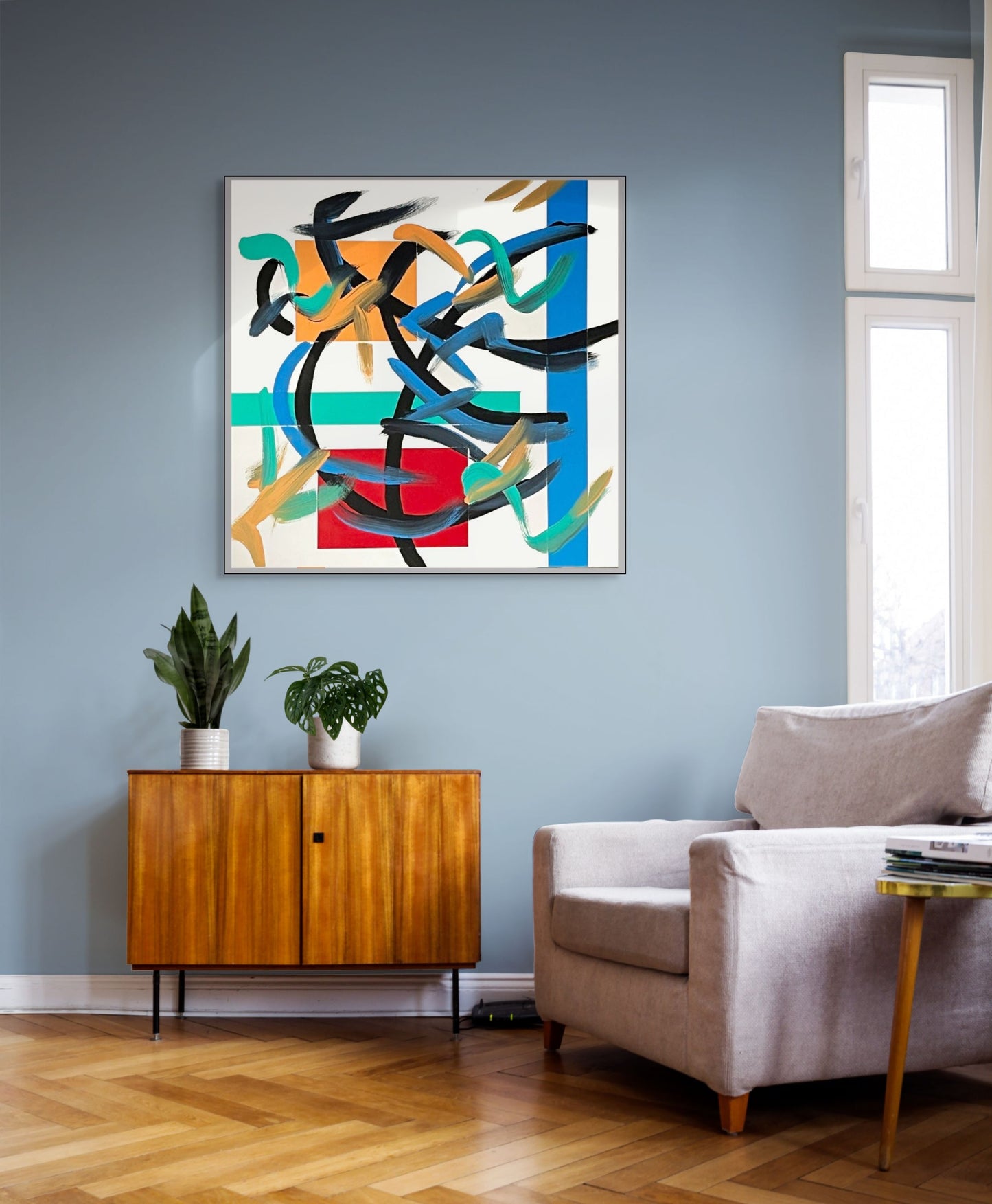Storm 060125 36" x 36"
Storm 060125 36" x 36"
See more art from the 2025 New Works

James Nowak’s Storm (2025) occupies a liminal space between chaos and order. At first glance, the painting seems to embody pure gestural abstraction—broad sweeps of teal, ochre, and black clash across the surface in storm-like turbulence. Yet embedded beneath this turbulence is a rigorous geometry: crisp planes of red, orange, teal, and blue establish a grid that pushes against the fluidity of the brushstrokes. This dialectic between freedom and containment is the conceptual core of Storm, situating it within the lineage of postmodern abstraction while also asserting Nowak’s individual voice.
The palette is both vibrant and confrontational. The warm hues (red and orange) radiate with an almost architectural solidity, while the cooler tones (blue and teal) move more fluidly, echoing the sweep of the brush. Black arcs serve as the storm’s scaffolding, lending rhythm and anchoring the composition. The hard-edged rectangles of color recall the precision of Constructivism or Mondrian, but Nowak resists their utopian harmony. Instead, he disrupts their stability with energetic marks that insist on impermanence and movement.
This collision of vocabularies—the strict geometry of color blocks and the spontaneity of painterly gesture—produces a friction that mirrors the storm metaphor. Rather than depicting meteorological weather, Storm embodies the psychic and cultural turbulence of the contemporary moment.
The sweeping brushstrokes operate almost as acts of resistance. They refuse to be contained by the structural rigidity of the underlying grid, spilling over borders and destabilizing visual balance. In doing so, Nowak reasserts the primacy of the artist’s hand and gesture in an era where digital design and algorithmic generation often privilege control, repetition, and precision. Storm becomes an argument for the vitality of imperfection, for the necessity of human chaos within systems of order.
Spatially, the work oscillates between flatness and depth. The hard-edged shapes pin the composition to the surface, but the sweeping arcs generate a sense of movement that pulls the viewer’s eye through overlapping pathways. There is no singular focal point—rather, vision ricochets across the painting, mirroring the experience of weather itself: unpredictable, forceful, and immersive. The teal band cutting horizontally across the canvas intensifies this tension, acting like a horizon line destabilized by erupting forces above and below.
Nowak’s Storm resonates with traditions of Abstract Expressionism, particularly the gestural dynamism of Franz Kline and the color-block tension of Hans Hofmann. Yet unlike his predecessors, Nowak does not commit to one language; instead, he stages a confrontation between competing visual grammars. This hybridity situates Storm firmly within 21st-century abstraction, where the interplay of painterly immediacy and digital-like flatness reflects broader cultural tensions—between analog and digital, freedom and control, chaos and order.
Ultimately, Storm is not merely about external turbulence but about interior states. The painting captures the struggle between containment and eruption, between structure and gesture, between clarity and confusion. Nowak translates these psychic conflicts into a visual field that is at once deeply personal and resonant with the collective condition of contemporary life. In this way, Storm stands as both an homage to the history of abstraction and a statement about its continuing relevance in 2025.

